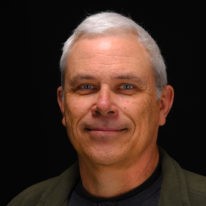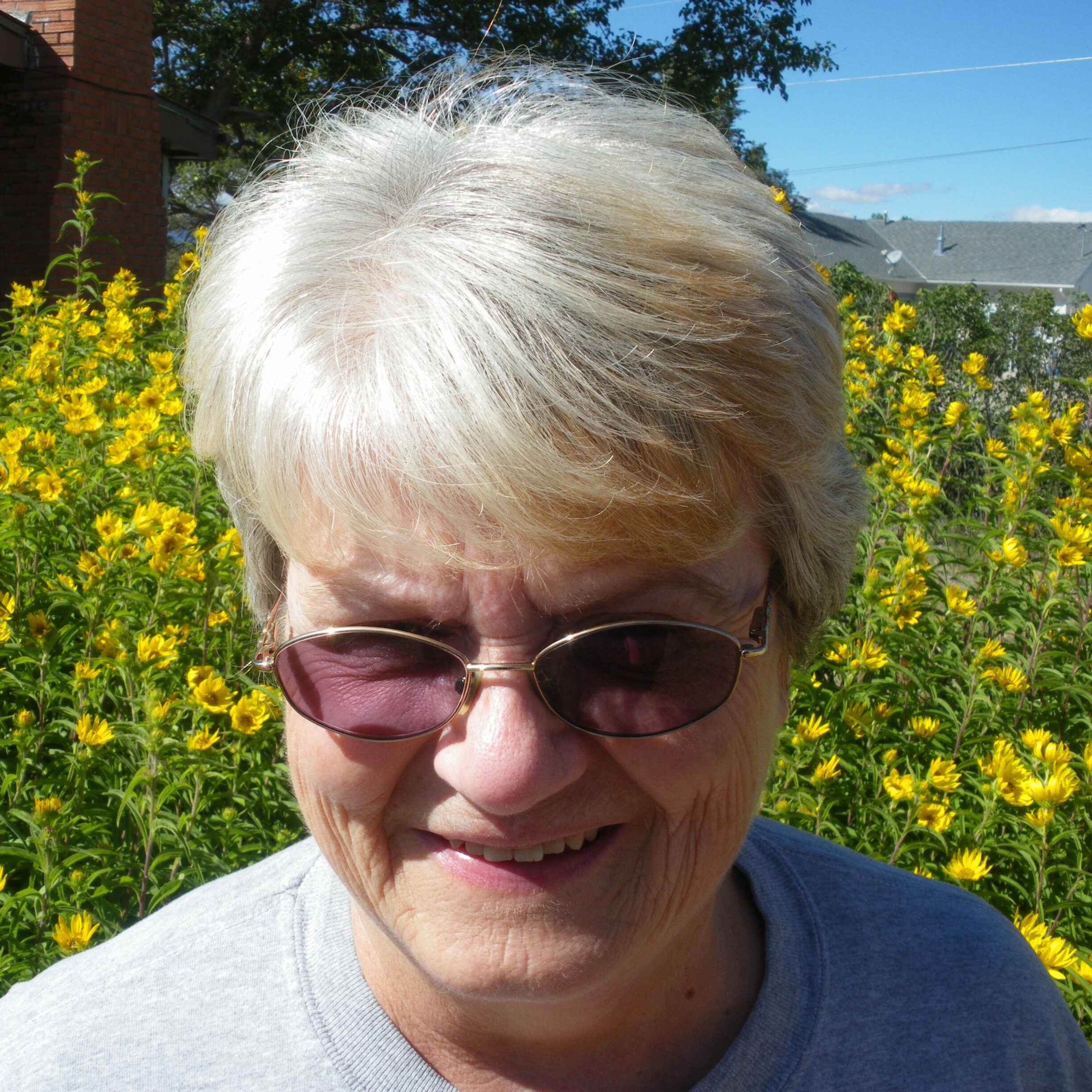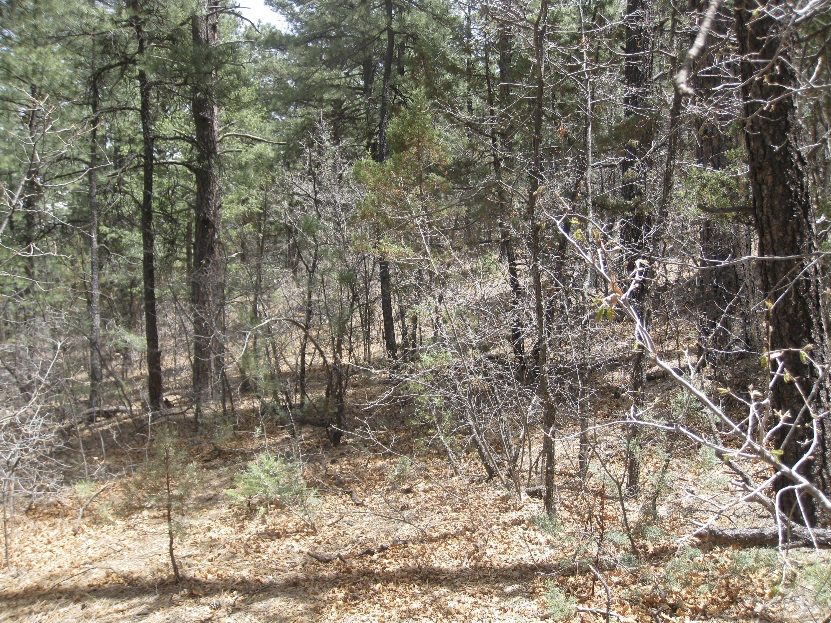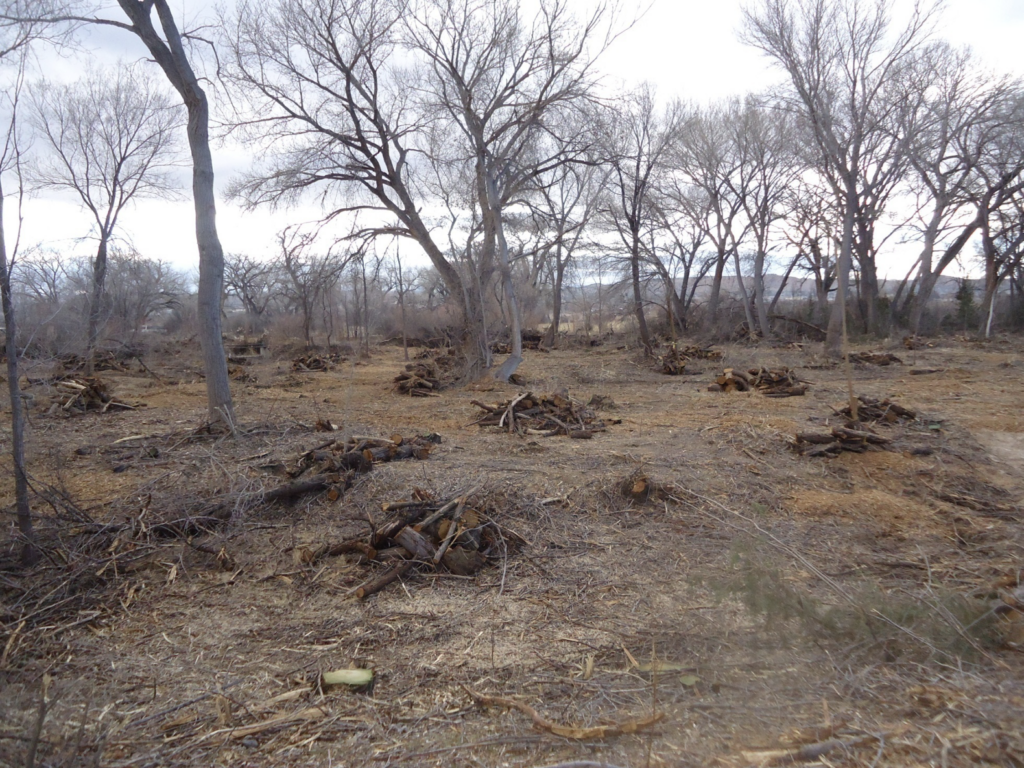
Welcome to the Western Collaborative Conservation Network’s profile series “Collaboratives Behind-the-Scenes.” This series features Q&As with different conservation organizations to provide a view into what it takes to run a collaborative organization from challenges faced in building partnerships to tips for budding organizations. Whether you’re already running a collaborative and are looking to increase your efficiency or are thinking of starting a collaborative but want to know more about what you’re getting into, we hope you find this series insightful.

We had the pleasure to speak with Joe Zebrowski (top right), Special Programs Manager for the New Mexico Forest & Watershed Restoration Institute (NMFWRI) and Dee Tarr (bottom right), District Manager of the Claunch-Pinto Soil and Water Conservation District work collaboratively on numerous projects throughout New Mexico including the Estancia Basin Watershed Health Restoration and Monitoring Project, the Greater Rio Grande Watershed Alliance, the Mountainair Collaborative, and the North Central New Mexico Watershed Restoration Program.
Note: This conversation has been edited for clarity and length.
Dee and Joe, please tell us a little about yourself, your work, and the structure of the organizations where you work.
Dee: I am Dee Tarr, I am the District Manager of the Claunch-Pinto Soil and Water Conservation District. After the Dust Bowl, around 1935, Congress formed the Soil Conservation Service to try to reinitiate conservation efforts. President Roosevelt asked all of the states to form organizations since the federal government could not put money on private land without a state arm. So, the states formed the Soil and Water Conservation Districts. Claunch-Pinto Soil and Water Conservation District was formed in September of 1941. We are actually now a subdivision of the state government. We fall under the New Mexico Department of Agriculture, and they fall under New Mexico State University. We have a Board of Supervisors, of which five are elected and two are appointed.
When I first was hired, my job was to create a natural resource conservation center. I have failed at that– I’ll let you know that right now. But that’s why I was hired. Now, I do a little bit of everything: I pay bills, I handle the budget for the district and turn in all of the necessary reports, I manage over three million dollars in grants and I do all of the grants paperwork, reimbursements and reporting. And I go to the field to assist in contractor site visits to discuss the money side of the project. I just started my 26th year here but I actually have a banking background.
Joe: Joe Zebrowski. My official title is Special Programs Manager for the New Mexico Forest & Watershed Restoration Institute (NMFWRI). It’s a job that I kind of made up for myself because I am primarily a geographic analyst. Through many other things, I got involved in a lot of activities at the institute and so it became kind of a catch-all position.
Our institute is part of New Mexico Highlands University (NMHU) and is part of a group of ecological restoration institutes established by Congress. Collectively, we are the Southwest Ecological Restoration Institutes (SWERI), which include the Ecological Restoration Institute at Northern Arizona University, Colorado Forest Restoration Institute at Colorado State University, and us (NMFWRI) here at New Mexico Highlands University.
Each Institute has its own unique flavor based on the nature and needs of the state and the nature of its host institution. NMHU is a “Comprehensive University” as opposed to a “Research University”– we do not have PhD programs. (Programs only go through master’s degrees.) So, you could say we are more of a service institution. We have a strong social work program and we are the home of the only forestry program in New Mexico. When Congress established us, they also designated that NMHU would be our host institution. I think part of that was to build capacity to live in New Mexico, which is under-resourced in this area. Highlands is a minority-serving and Hispanic-serving institution. Our funding is established by Congress every year distinctly under a Congressional Act. Each year we receive a congressional appropriation and that money is sent to us through the United States Forest Service (USFS), but we are not part of the USFS budget.
NMFWRI is growing very fast. I have been here a little over 15 years now. I started in 2007 as a consultant and was hired on as staff after a few months. For many years we were about eight people total but since our funding was bolstered we now have about 20 staff, which were mostly hired in the past two years. And so now, we actually have an organization structure. When you’re only eight people, you are one organization with a lot of specialists; we all backed one another up, which is how I found myself working with Dee. But now, we have a director, administrative staff, an education outreach coordinator, a public information officer, and multiple programs including monitoring, GIS, collaboration, and workforce development programs. We’ve grown and gotten a bit more complicated in the process.
How do your organizations come together and what are the connections between your work and the work that your organizations do?
Dee: Well, in 2005 we formed a watershed project for which I am the project manager. We had a small grant of $600,000 to do watershed work through the NM Water Trust Board and so we gathered everyone together to talk about how we could all work together on watershed health issues. The project included four Soil and Water Conservation Districts, New Mexico State Forestry, New Mexico Department of Agriculture, and others and we contracted NMFWRI to facilitate the meetings.
Joe: As Dee said, NMFWRI was brought in to help facilitate these meetings. Our director at the time, Dr. Ken Smith was acting as facilitator. About the time I started at NMFWRI, there was a need to help map these projects on GIS. So, two of us here at the Institute were involved in going through books and books of paper maps and digitizing them. Starting in 2008, Dr. Smith would bring me to the meetings to present the maps so I got familiar with the group. If you show up to a meeting with a map, you naturally start facilitating because it puts people in a common frame of reference. Maps are a little bit arbitrary; it takes a little bit of argument and hand-waving off the table and you can get down to the next steps. When Dr. Smith started not being able to come to the meetings, I would facilitate in his place, and when he moved on to another position in 2009, he left me in the facilitator role with Dee’s generous permission.


What is it like to collaborate together?
Dee: It’s pretty good because we can back each other up. We’ve worked together long enough, don’t you feel Joe, that we can back up each other. As far as I am concerned, we’ve had a good partnership of collaboration.
Joe: Ya, I think we have built trust. And to be candid, Dee is not a person who automatically trusts people right away. So she is a trust-but-verify person and I think we built a trusting relationship and we know that we can take one another’s word on things. That’s one thing that’s been great about working together. I think we complement each other in certain ways.
Dee: And he keeps me in line!
Joe: I give Dee gentle hints when it’s time to move on because collaboration can get a little bit prickly. I am not saying that Dee gets prickly, but the room can get that way. Earlier on, there were tensions. As the facilitator, I had to read the room, help the conversation stay on topic, and not let one point of view or one person dominate. It worked out that Dee did such an incredible job assembling this group of very talented people on this project, that it was easy from my point of view to see success in it. Dee has had to deal with challenges of turn-over and tensions when the money started showing up.
I would say that the other great enabler of collaboration early on was just trying to document our procedures. When I walked in, there was already a good governance structure of who had voting eligibility and all of that. Having those ground rules already in place was really important to our ability to collaborate and for me to facilitate.
Dee, what kinds of things can federal agencies do to support collaborative conservation? What kinds of constraints exist?
Dee: Federal agencies can help. We had one employee of the USFS join a meeting about the Cibola National Forest and he saw what we were doing. He felt like the USFS was way behind on watershed work in the area. He started coming to our meetings, getting projects ready, doing NEPA and cultural work.
Joe and I work on two different projects. The other is the Greater Rio Grande Watershed Alliance and it has 14 Soil and Water Conservation Districts as well as Tribal interests. Some state and federal agencies can be difficult to get to the table. In some ways, they are difficult to work with if you don’t find that person that’s really on fire to get some work done.
Joe: I think you’re spot on, Dee. I’d say that the Estancia Basin Project provided a venue for the USFS to showcase some of their work on their side of the boundary and in that process, we were able to educate them on all of the work going on the private-lands side of the boundary. The Forest Service person Dee mentioned really picked up on it because he started to see connections between boundaries of landscape impact from restoration treatments. That’s something this kind of collaboration brings to both sides: a mutual awareness of efforts. The coordination isn’t always perfect but at least you have mutual awareness.
Joe, from your perspective, what kind of constraints are you and your organization under as part of a university?
Joe: So actually I think we’re in a good position for this kind of role because we have a lot of flexibility that the agencies don’t have. When we’re brought in as facilitators or as partners, we are kind of the people that don’t have a dog in the fight because we’re not a land manager. We can bring in an objective opinion. Even though we are funded through the federal government and the USFS, we are not the voice of the USFS and we can call them out or advocate for what they’re doing when it’s appropriate. That fits nicely with our academic home.
Some of the constraints… NMHU is a small university, it’s really resource-challenged in administrative capacity. It lets you do things more informally in some ways but it can also be hard to push paper sometimes. Being a small service-oriented university, we don’t charge indirect fees for this particular project, so the university doesn’t skim any money off the top of our agreement. I do not think a lot of bigger universities would let that happen.
The only other constraint is a practical one. NMHU is located in North Central New Mexico in Las Vegas, which is a long drive from every place we go. I did a lot of 6-hour round-trip drives for two-hour meetings with lunch, which made for a lot of long days. Lots of rural problem solving was done on those drives. I do miss that since we’ve gone so virtual now but it’s also a logistical constraint. Overall, I think it’s been a real plus to work in the university environment.
How do you feel that collaborating in this way (a university and a government entity working together) can help to reach the goals of each organization?
Dee: Well, I think we do. It gives us a chance to showcase some of our reports by advertising them on the Institute website. And, it gives NMFWRI a chance to do pre- and post-monitoring on the Greater Rio Grande Projects. It works out really well because we can showcase what the other is doing.
Joe: Exactly, and in fact it leads to some opportunities for student work. I’ve been able to have students work on a few GIS projects, and because our Institute has a state-wide mandate, we really look at the projects that we’re working on together as a model for other collaborative efforts around the state since we learn a lot through participating. And those lessons provide further lessons on how things can be done. The other thing, and I wish that we had more capacity in this way, is that in almost every meeting there’s some kind of practical forestry issue going on, whether it’s forest health (insects and disease) or treatment prescription conversations. I am not a forester but I bring those discussions back to our forestry people on staff and make sure they are aware of the challenges happening on a particular landscape and they could relay some advice back and they have better awareness of the forest health issues going on in the state. Having that tie to practical work going on in the community and in the forest is something uncommon in an academic environment. And that’s something I like about our role here. Since we are not a research institute, we don’t have to put everything into a research lens. We are not quite an extension but we have that sort of mission towards forestry.


How are other stakeholders involved in your work? What brings people together and what doesn’t?
Dee: A common goal brings people together. On both sides we were really lucky to be able to bring in the Soil and Water Conservation Districts and their partners. It’s been harder to bring in Tribes because of how they are structured, but we do work on Tribal land. We try to make sure we have notes from the meetings to disperse so everyone knows what was discussed.
Joe: I would say that sense of common mission, even if it’s in different vocabulary. I remember when I first read the organizing document for the Estancia Basin Project and it used the term “tree-infested watershed.” That’s not quite the language that others would use but there’s a common understanding that there’s a risk of catastrophic wildfire and that there was a lot of encroachment into rangelands. Everyone has a common interest in watershed health and wildfire prevention which lets people who otherwise have very different perspectives work together.
The thing that doesn’t work is drama. It’s a problem. It happens at different levels and causes partners to not come because they don’t want to be surrounded by tension. It’s a challenge for the facilitator to manage drama and sometimes it can’t be managed well. We’ve lost a few collaborators because they weren’t comfortable and that’s been a challenge for us. But a credit to these collaborations is that they press through and they’re still getting the work done on the ground. There’s a record of success that enables partner participation because while people are turned off by drama, they’re turned on by success. Would you agree with that, Dee?
Dee: Yes, I agree. There are times when it’s really hard trying to make sure everyone is getting their equal piece and you never want to go to a district and say “I have to take that money away and give it to someone else because you’re not doing what you’re supposed to do.” I’ve had to do that a time or two and it doesn’t make for fast friends, I can guarantee it. But, Claunch-Pinto is the fiscal agent and I have deadlines I have to meet and if we don’t meet those deadlines, we don’t get more money. That’s why the facilitator is so important to me.
How do you maintain the connections and communication that you have with your partners?
Dee: Email.
Joe: We get on the phone a lot too to keep engagement between meetings. This work requires regular communication.
Dee: I am on the phone a lot. I think if I go a week without talking to one of our partners, I am in trouble. Joe and I have already talked twice this week. You don’t only have your partners but also the project managers on the grants that you have to speak with too.
What accomplishments has your partnership made that you are especially proud of and how do you evaluate or measure success?
Dee: Well, Joe, which one should we choose?
Joe: I think we’re really proud to be a part of all of our collaborative projects. The Estancia Basin, seeing that cross-boundary work and the lessons learned are awesome. And we hope to share the lessons from these projects with the greater local community. On the Greater Rio Grande Project, our primary role has been riparian ecological monitoring, but what’s really interesting is that we started monitoring in 2010 and we have a pretty consistent record of all those projects over a span of 13 years. To have one dataset and records of project plans, prescriptions, and inspection reports over such a long period of time and over a large landscape is incredible. Now we are building the information into a database to start teasing out trends, lessons learned, and information to inform adaptive management. The Greater Rio Grande collaboration has provided an opportunity to share some important knowledge with people working in restoration.
Dee: The Estancia Basin Project has also been doing monitoring since 2005. The monitoring is contracted out to a private company and we post the information on the Institute’s website. The project compared areas in which one plot of forest was thinned and an adjacent plot acted as our control so we could look at change over time. We lost some of those plots in wildfires but we can continue monitoring, we just look at different things.
Joe: Ya, that monitoring was important to the funding sources because we could actually demonstrate through data and observations that these types of treatments have desired outcomes. You can never 100% predict that a treatment will mitigate a fire effect but they have collected data supplemented with observations to show how these treatments can impact fire behavior. Through the Estancia Basin monitoring we were able to report impacts on soil health, erosion, and wildlife. There have been a couple of publications that have come out of that project and I would say that’s been a major accomplishment: generating science.
Dee: I feel that I’ve learned that it’s better to have a third party, such as the Institute or a private company, to do the monitoring so it’s not the same organization doing the research and publishing it. It adds credibility.
What are some of the challenges you face as a partnership?
Joe: Sometimes a challenge the partnership faces is inertia. Both of these projects have been going on for many years and have been very successful. Since Dee carries so much of the load, it’s kind of assumed that everything is going to happen and the workload is not seen. Sometimes when things are going smoothly people start to lose interest because there’s not as much to discuss. Much of the business in meetings is tracking how our money is expended and it’s not the most sterling thing even though it’s the most important. Well, it may be thrilling to Dee because she does money stuff… But, that becomes a little bit of a challenge to keep people at the table, not just when there’s drama but also when there’s so much success that people just assume that everything is happening by magic.
Dee: I agree. We have meetings and so much of the time I end up doing all of the talking and I think that’s bad. All I am doing is reporting what we’ve been doing and even though Joe encourages discussion, we don’t get very much feedback.
Joe: Especially as a facilitator, it was easier to have more interaction when meetings were in person. Reading the room is much easier in-person than in a Zoom meeting where sometimes not everyone has their camera on. So, maintaining that level of engagement can definitely be a challenge. These projects have been successful and they have their own inertia and process, so it’s easy to skip meetings without a lot of impact. However, we try to keep our meetings regular to maintain momentum, but it’s been a challenge.
Do you have any tips to offer other collaborative groups that are forming partnerships between federal agencies and universities?
Joe: We are unique since we don’t really wear much of the university hat, but I’ll say you have to be careful who your university partner is so they don’t try to turn your project into an extractive science project. You don’t want your partners to feel like lab rats in your science project. That’s my caution about university engagement in this field. I’ve often seen universities get too academic too quickly in these groups.
Dee: Well, I haven’t done too much work with other universities but sometimes they come in and they feel like they’re going to tell you how to do your program because they know more than you know because they’ve done all the research. I think that’s probably the hardest part.
Is there anything more you would like to add?
Dee: We’ve been really fortunate. Collaboration is like building a business. You bring in your partners and you hope that they work with you. If they don’t, they go by the wayside. And you’re just trying to keep everybody happy.
Joe: There’s a lot of knowledge and talent in collaboration from many disciplines. It’s almost more an aptitude and an interest more than anything else. From what I’ve seen at the WCCN Confluence and some of the WCCN meetings is that there’s such a knowledge and talent to get people to work together. Not being extractive is so important and building relationships and understanding that the loudest voice isn’t always the smartest voice. Facilitation is really challenging in a collaborative environment but when it works it’s really sweet.



